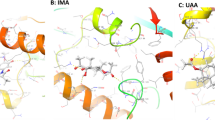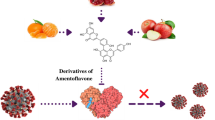Abstract
Ivermectin is a large spectrum antiparasitic drug that is very safe at the doses actually used. However, as it is being studied for new applications that would require higher doses, we should pay attention to its effects at high concentrations. As micromolar concentrations of ivermectin have been reported to inhibit the sarco-endoplasmic reticulum Ca2+-ATPase (SERCA), we decided to investigate its putative inhibitory effect on other two important P-type ATPases, namely the Na+ , K+-ATPase and H+/K+-ATPase. We first extended the data on SERCA, using preparations from rat enriched in SERCA1a (extensor digitorum longus) and 1b (heart) isoforms. Secondly, we tested the effect of ivermectin in two preparations of rat Na+, K+-ATPase in order to appreciate its putative selectivity towards the α1 isoform (kidney) and the α2/α3 isoforms (brain), and in an H+/K+-ATPase preparation from rat stomach. Ivermectin inhibited all these ATPases with similar IC50 values (6–17 µM). With respect to the inhibition of the Na+, K+-ATPase, ivermectin acts by a mechanism different from the classical cardiac glycosides, based on selectivity towards the isoforms, sensibility to the antagonistic effect of K+ and to ionic conditions favoring different conformations of the enzyme. We conclude that ivermectin is a nonselective inhibitor of three important mammalian P-type ATPases, which is indicative of putative important adverse effects if this drug were used at high doses. As a consequence, we propose that novel analogs of ivermectin should be developed and tested both for their parasitic activity and in vitro effects on P-type ATPases.





Similar content being viewed by others
Abbreviations
- DMSO:
-
dimethyl sulfoxide
- EDTA:
-
ethylenediaminetetraacetic acid
- HEPES:
-
4-(2-hydroxyethyl)-1-piperazineethanesulfonic acid
- PMSF:
-
phenylmethylsulfonyl fluoride
- POPOP:
-
1,4-bis-[2-(5-phenyloxazolyl)]-benzene
- PPO:
-
2,5-diphenyloxazole
- Tris:
-
tris(hydroxymethyl)aminomethane
References
Ahern GP, Junankar PR, Pace SM, Curtis S, Mould JA, Dulhunty AF (1999) Effects of ivermectin and midecamycin on ryanodine receptors and the Ca2+-ATPase in sarcoplasmic reticulum of rabbit and rat skeletal muscle. J Physiol 514:313–326
Aronson JK (2007) Old drugs—new uses. Br J Clin Pharmacol 64:563–565
Bilmen JG, Wootton LL, Michelangeli F (2002) The inhibition of the sarcoplasmic/endoplasmic reticulum Ca2+-ATPase by macrocyclic lactones and cyclosporin A. Biochem J 366:255–263
Bradley D (2005) Why big pharma needs to learn the three 'R's. Nat Rev Drug Discov 4:446
Cantley LC Jr, Cantley LG, Josephson L (1978) A characterization of vanadate interactions with the (Na, K)-ATPase. Mechanistic and regulatory implications. J Biol Chem 253:7361–7368
Fiske CH, Subbarow Y (1925) The colorimetric determination of phosphorus. J Biol Chem 66:375–392
Geary TG (2005) Ivermectin 20 years on: maturation of a wonder drug. Trends Parasitol 21:530–532
Lovell RA (1990) Ivermectin and piperazine toxicoses in dogs and cats. Vet Clin North Am Small Anim Pract 20:453–468
Lowry OH, Rosebrough NJ, Farr AL, Randall RJ (1951) Protein measurement with the Folin phenol reagent. J Biol Chem 193:265–275
Noël F, Cumps J (1989) Use of a non-linear regression approach for the analysis of the ouabain-K+ interaction with (Na++ K+)-ATPase from guinea-pig and rat hearts. Brazilian J Med Biol Res 22:433–445
Noël F, Souto-Pardon R (1989) Vanadate sensitivity of Na++ K+-ATPase from Schistosoma mansoni and its modulation by Na+, K+ and Mg2+. Life Sci 44:1677–1683
Ochiai H, Takeda K, Soeda S, Tahara Y, Takenaka H, Abe K, Hayashi Y, Noguchi S, Inoue M, Schwarz S, Schwarz W, Kawamura M (2009) Epigallocatechin-3-gallate is an inhibitor of Na+, K+-ATPase by favoring the E1 conformation. Biochem Pharmacol. doi:10.1016/j.bcp.2009.06.007
Poças ESC, Costa PRR, Silva AJM, Noël F (2003) 2-Methoxy-3, 8, 9-Trihydroxy Coumestan: a new synthetic inhibitor of Na+, K+-ATPase with an original mechanism of action. Biochem Pharmacol 66:2169–2176
Pôças ESC, Touza NA, Pimenta PHC, Leitão FB, Neto CD, da Silva AJM, Costa PRR, Noël F (2008) Insights into the mechanism of Na+, K+-ATPase inhibition by 2-methoxy-3, 8, 9-trihydroxy coumestan. Bioorg Med Chem 16:8801–8805
Prichard RK (2007) Ivermectin resistance and overview of the consortium for anthelmintic resistance SNPs. Expert Opin Drug Discov 2:S41–S52
Sachs G, Munson K, Lambrecht N, Shin JM (2000) Analysis of the membrane domain of the gastric H+/K+-ATPase. J Exp Biol 203:161–170
Santos AR, Ferreira MLG, Kaiser CR, Férézou JP (2005) Preparation of intact hexahydrobenzofuran subunits of ivermectin by selective ozonolysis of the Δ3, 4-intermediate secoester. Eur J Org Chem 15:3348–3359
Santos AR, Falcão CA, Muzitano MF, Kaiser CR, Rossi-Bergmann B, Férézou JP (2009) Ivermectin-derived leishmanicidal compounds. Bioorg Med Chem 17:496–502
Shu EN, Okonkwo PO, Batey WO, Onyeanusi J (2000) Ivermectin: concentration-dependent effects on adenosine triphosphatases in adult worms of Onchocerca volvulus. Acta Tropica 74:7–11
Sweadner KJ, Donnet C (2001) Structural similarities of Na+, K+-ATPase and SERCA, the Ca2+-ATPase of the sarcoplasmic reticulum. Biochem J 356:685–704
Wuytack F, Raeymaekers L, Missiaen L (2002) Molecular physiology of the SERCA and SPCA pumps. Cell Calcium 32:279–305
Yatime L, Buch-Pedersen MJ, Musgaard M, Morth JP, Winther AML, Pedersen BP, Olesen C, Andersen JP, Vilsen B, Schiøtt B, Palmgren MG, Møller JV, Nissen P, Fedosova N (2009) P-type ATPases as drug targets: tools for medicine and science. Biochim Biophys Acta 1787:207–220
Acknowledgments
Financial support was provided by Fundação Carlos Chagas Filho de Amparo a Pesquisa do Estado do Rio de Janeiro (FAPERJ) and Conselho Nacional de Desenvolvimento Científico e Tecnológico (CNPq), Brazil. F. Noël and PHC Pimenta were fellows of CNPq.
Author information
Authors and Affiliations
Corresponding author
Rights and permissions
About this article
Cite this article
Pimenta, P.H.C., Silva, C.L.M. & Noël, F. Ivermectin is a nonselective inhibitor of mammalian P-type ATPases. Naunyn-Schmied Arch Pharmacol 381, 147–152 (2010). https://doi.org/10.1007/s00210-009-0483-z
Received:
Accepted:
Published:
Issue Date:
DOI: https://doi.org/10.1007/s00210-009-0483-z




